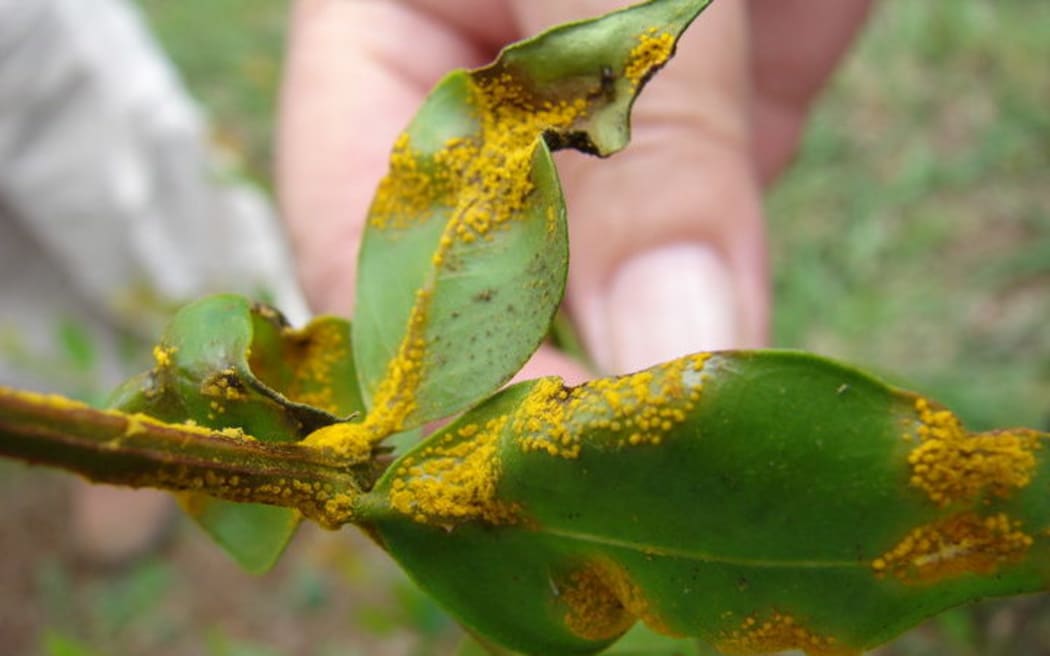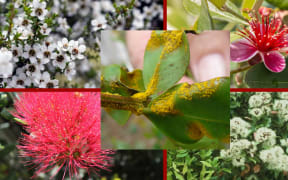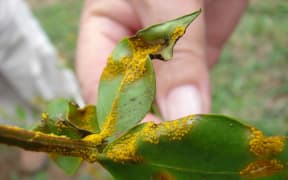The time window to eradicate Myrtle Rust from New Zealand is running out after the disease was discovered at three more Taranaki properties, a scientist says.

Myrtle Rust has been found at eight properties. Photo: Supplied
Three more Taranaki sites were confirmed with the infection yesterday, bringing the total to eight properties, two in Kerikeri in Northland, and the remainder in the Taranaki region.
The Director of New Zealand's Biological Heritage National Science Challenge, Andrea Byrom, called the latest find devastating and said it indicated the disease was becoming more widespread.
She said the jury was still out on how the disease was spreading and how it first got to New Zealand, although the Ministry for Primary Industries has said the most likely scenario is that the fungal spores entered New Zealand from Australia during a major wind event.
Dr Byrom said it was very difficult to know how widespread the problem was, as if it was spread by the wind it could be in multiple sites, but that is not known at this point.
She said she understood that the ministry was throwing the book at the problem.
"It's not too late to eradicate but the possibility and the time window is getting shorter literally every day and with more finds because of the likelihood of spread."
Dr Byrom said it could spread through wind, plantings out in the environment, or movements through the nursery trade.
Plants in nurseries are grown in shady and moist conditions with young shoots at this time of year, which Dr Byrom said was unusual compared to what was happening in the natural environment.
She said because of this, the nurseries were similar to a canary in a coal mine, because they were where the symptoms of the fungus were most likely to be observed.
Dr Byrom said there needed to be a systematic look at all the possible pathways of spread and potentially shutting them down as fast as possible.
She said until the source of the pathogen, that can kill Pōhutukawa, feijoa and rātā, was found eradication would get more and more difficult.
All of the affected properties have restrictions on the movement of plants or other risk materials off the sites which are also being treated with fungicide, and risk plants are being safely destroyed.
The ministry said surveillance was underway in the areas surrounding the properties for signs of the disease.




